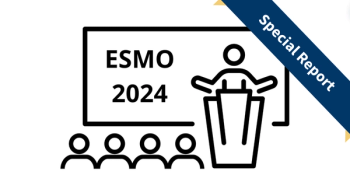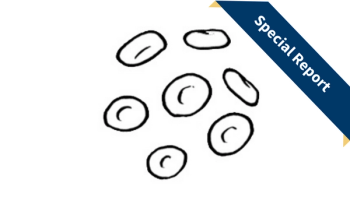
Challenges Burden Pediatric Oncologists Following the Peak of COVID-19
Pediatric oncologists are facing unprecedented challenges in the aftermath of the COVID-19 pandemic. In Boston, one cancer institute still has reminiscent encounters with pediatric patients.
BOSTON, MASS. – In May 2020, which some refer to as the peak of the pandemic, Allison F. O’Neill, MD, remembers the uneasy feeling of isolation which surrounded the hallways and waiting rooms of the pediatric outpatient clinic at the Dana-Farber Cancer Institute (Dana-Farber).
Thick plexiglass surrounded each room and tape lined the floors, suggesting social distancing to separate patients and families from others around the clinic.
“In the pre-COVID clinic era, patients congregated in a unique way in the waiting and resource room. Patients were interacting with one another and providers congregated more in common spaces,” noted O’Neill, Clinical Director, Solid Tumor Program, Pediatric Hematology/Oncology at Dana-Farber, in an interview with Targeted OncologyTM. “With the onset of COVID, a lot of that changed. At the recommendation of our institute, providers stayed in their offices and only came to the clinic when seeing patients. We had to orchestrate how we could spend a minimal amount of time with patients so as to keep everyone safe.”
For oncologists like O’Neill, even the ways to see patients had been altered. With an increased use of telehealth, patients were not coming in person as often. At Dana-Farber, experts worked to operationalize virtual visits seamlessly, to best care for their patients while remaining socially distant.
“For a time, we were seeing patients more routinely in a virtual setting. We would defer in-patient visits for patients undergoing a scan knowing that the scan would be informative and that in-person visit was less crucial.Certainly clinically complex patients still came in person,” said O’Neill. “We've returned to seeing most patients in person on the timeline in which they should be seen, which is great. It is difficult to replace an in-person visit with virtual, but it's so nice to have the zoom option now if necessary.”
Even though over 2 years has passed since the peak, very little published and institutional data exists focusing on pediatric patients with cancer.1
Surprisingly, the few studies which have examined COVID-19 in this patient population have revealed patients to have a mild clinical course and low asymptomatic carriage rates. This has allowed for the care of pediatric oncology patients on active therapy to remain relatively unchanged with them still able to receive treatments, including chemotherapy courses delivered as scheduled, stem-cell transplant conditioning, and more.
“Our goal was always to uphold the standards of care that we would have provided independent of COVID. It was remarkable the number of administrative meetings we had on a regular basis. Guidelines changed every other day, but we were adapting in real time. It was remarkable how fast we as a community were able to adjust to make sure that we didn't compromise on quality of care,” O’Neill said.
While pediatric oncology patients may not have been developing severe cases of COVID, there was a strong decline in new patient diagnoses which correlated closely with the time of quarantine.
“We saw a dip in new diagnoses, a delay in diagnoses, and then a tremendous rebound, about a year and a half into COVID,” O’Neill added.
A study published in the American Society of Clinical Oncology Educational Book led by study author Gerard C. Millen, MD, focused on how the care of children with cancer was affected due to the COVID-19 pandemic.2
“Pediatric oncology care relies on prompt evaluation and diagnosis, referral to tertiary centers, multidisciplinary subspecialized teams, timely and coordinated multimodal therapy, and access to supportive care—all of which have been affected by the pandemic. Prioritizing patients with COVID-19, combined with lockdowns and restricted transportation, has contributed to delayed and fragmented attention to children with cancer,” wrote the study authors led by Millen, cancer research United Kingdom clinical trials unit, Institute of Cancer, and Genomic Sciences, College of Medical and Dental Sciences, University of Birmingham, Birmingham.
In the United States and globally, patients and families were too nervous to seek care, adding yet another barrier during the midst of the pandemic. There were fewer emergency visits by pediatric patients with cancer, a reduction in outpatient visits, decreased hours of operation by hospitals and clinics, all which possibly could have influenced the timeliness of diagnoses for these patients.2,3
Over past decades, clinical trials have been crucial in continuing to improve outcomes for children with cancer. But with health care systems being overwhelmed with the amounts of patients coming in with COVID-19, there was a delayed opening of new clinical trials and limited accrual of existing trials. This highlighted the need to consider vulnerable populations, including children with cancer.
During the first wave of the COVID-19 pandemic which lasted approximately between March 1, 2022, and April 30, 2020, trial recruitment was dramatically affected, according to data published in the Innovative Therapies for Children with Cancer consortium. A total of 48.5% of phase 1 trials, 61% of phase 2 trials, and 64% of molecular platform trials were closed to recruitment in at least 1 site and an additional 16% of sites stopped all clinical trial recruitment for pediatric patients with cancer.3
Overall recruitment was 61% lower compared to a year prior in 2019 and concerningly, there was also a reduction in site initiation visits and monitoring visits during the start of the pandemic, with 67% of site initiation visits and 64% of monitoring visits canceled completely.
Not only was it unclear in the beginning whether patients with cancer would be symptomatic or develop advanced disease, but the pandemic also created many obstacles for diagnosing patients and providing quality care for children with cancer across the globe.
“Fewer patients enrolled for a period because they couldn't travel to enroll or were less interested in enrolling on trials because it meant more frequent visits and perceived exposures. Now, I think we're seeing what we would predict to be normal enrollments per month by patient,” stated O’Neill. “There was a period of time where even if patients were enrolled on trial, we couldn't perform the correlative research on the back end.We have now rebounded to be able to perform every aspect.”
However, since this dramatic reduction in clinical trial recruitment, recruitment in both the United States and Europe has been robust with enrollment increasing and patients being able to come in person.
“Now that we are back in person on a regular basis, so much of that has rebounded. There are fewer delays to startup treatment, fewer barriers to patients enrolling on clinical trials, and fewer barriers to the research being conducted, thankfully,” added O’Neill.
Everyone has been impacted by the additional barriers created by the pandemic. For those in the pediatric oncology field, pediatric cancer providers and institutions have been resilient in these unprecedented times with enormous obstacles.
“There is hope that the effects of the pandemic will subside and the adaptations it has imposed will bring a brighter future for the care of children with cancer,” wrote Millen in the study.
Still, not much is known about the long-term consequences that may come for those who have had COVID, including pediatric patients with cancer. For patients and providers alike, the impact of COVID-19 on the overall survival and outcomes of children with cancer is unclear and worrisome.
“We don't know or understand whether there'll be long term consequences to COVID. There are multiple ongoing studies at Dana-Farber looking longitudinally at response to COVID from an immune perspective and longer-term follow-up for these patients, pediatric and adult alike.There is also research investigating whether the cancer-afflicted population is different from the non-cancer afflicted population and/or providers for both populations, so there are multiple cohorts being followed. There's a lot to be learned there and a lot to understand as it pertains to whether COVID has impacted disease or general health in our patient population. This will take a while to understand, but it hasn't impacted how we've approached the care of our patients in the short term,” said O’Neill.
With vaccines now accessible to children, O'Neill urges her patients to get it as it will be crucial to evaluate their protective value in this patient population.
“We recommend our patients to be vaccinated. Thankfully, we now therapies available to treat COVID-exposed or infected patients,” said O’Neill. “We are so fortunate to be in a different scenario than we were prior, with the opportunity to protect, prevent, and treat our patients, should they become COVID-positive.”
Now, experts like O’Neill are focusing on ways to reestablish their community at work. Though the social aspects have not fully normalized yet, physicians at Dana-Farber congregate in their work room more frequently, have lunches together, talk fluidly about patient care, socialize with their patients on their daily rounds, and mingle in the halls.
“It's just trying to reestablish that collaborative, intellectual community that fosters support of one another and of new trainees. As we return to that degree of normalcy, we try to reestablish the true culture that makes work so special. To me, that's been a challenge and a very important thing to rebound from,” added O’Neill.
References:
O'Neill AF, Wall CB, Roy-Bornstein C, et al. Timely pediatric cancer diagnoses: An unexpected casualty of the COVID-19 surge. Pediatr Blood Cancer. 2020;67(12):e28729. doi:10.1002/pbc.28729
Moreira DC, Millen, GC, Sands S, et al. The care of children with cancer during the COVID-19 pandemic. American Society of Clinical Oncology Educational Book. 2021;(41). doi: 10.1200/EDBK_321497
Rubio-San-Simón A, André N, Cefalo MG, et al. Impact of COVID-19 in pediatric early-phase cancer clinical trials in Europe: A report from the Innovative Therapies for Children with Cancer (ITCC) consortium. Eur J Cancer. 2020;141:82-91. doi:10.1016/j.ejca.2020.09.024







































